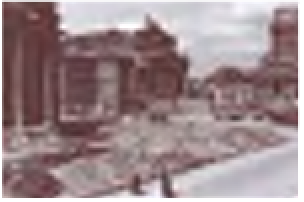Travel Reference
In-Depth Information
Left
At Checkpoint Charlie
Centre
Grafitti on the Wall
Right
Marlene Dietrich in the “Blue Angel”
Moments in History
1685: Edict of
Potsdam
Berlin's history as a
cultural capital began
in 1685, when the
far-sighted Great
Elector announced in
the Edict of Potsdam
that around 20,000
Huguenots would be
taken in by Berlin.
Many were excellent
craftsmen and scien-
tists, who, having fled Catholic
France because of their
Protestant beliefs, brought a new
age of cultural ascendancy to the
provincial town.
1928: Golden
Twenties
Between 1919 and
1933, Berlin flour-
ished culturally and
became an important
metropolis. Film, the-
atre, cabaret shows
and thousands of
restaurants and
bars transformed the
town into an interna-
tional centre of
entertainment. In the realms of
fine art and architecture, too,
Berlin set new standards.
Statue of the Great Elector
1744: Frederick the Great
Although “Old Fritz , as
Frederick the Great was nick-
named, preferred the isolation of
Sanssouci to the bustle of Berlin,
in 1740 he began to transform
the city into a new metropolis.
In particular, the “Forum Frideri-
cianum” in Unter den Linden
brought new splendours to the
town, and masterpieces such as
the national opera house helped
transform Berlin into one of the
most important European cities.
May 1945: Berlin in ruins
1945: Surrender
Signed in Berlin-Karlshorst on
8 May 1945, Germany's uncondi-
tional surrender marked more
than the end of World War II. The
previous Jewish population of
161,000 had virtually disappeared
and Berliners called their city
“the empire's fields of rubble .
1953: Workers' Uprising
in East Germany
On 17 June 1953, construction
workers in Frankfurter Allee
demonstrated against an
increase in the average rate of
Frederick playing the flute in Sanssouci
Old Photos of Berlin:
www.luise-berlin.de/Historie/indexhis.htm
42


















